Bison are considered a keystone species, which essentially means they have a disproportionately large impact on their ecosystem. When a keystone species is removed, it has drastic impacts on the ecosystem. Restoring bison to the landscape also helps to restore the prairie as a whole. Their presence has a cascading impact on the land, water, wildlife, plants, and insects of the prairie. As such, American Prairie’s bison restoration goals also support many of the organization’s other goals of ecological health for the grasslands of north central Montana.
The bison’s return to the landscape is fulfilling a vital role on the prairie that has been vacant for over 100 years, and we are still learning about this crucial ecological influence.
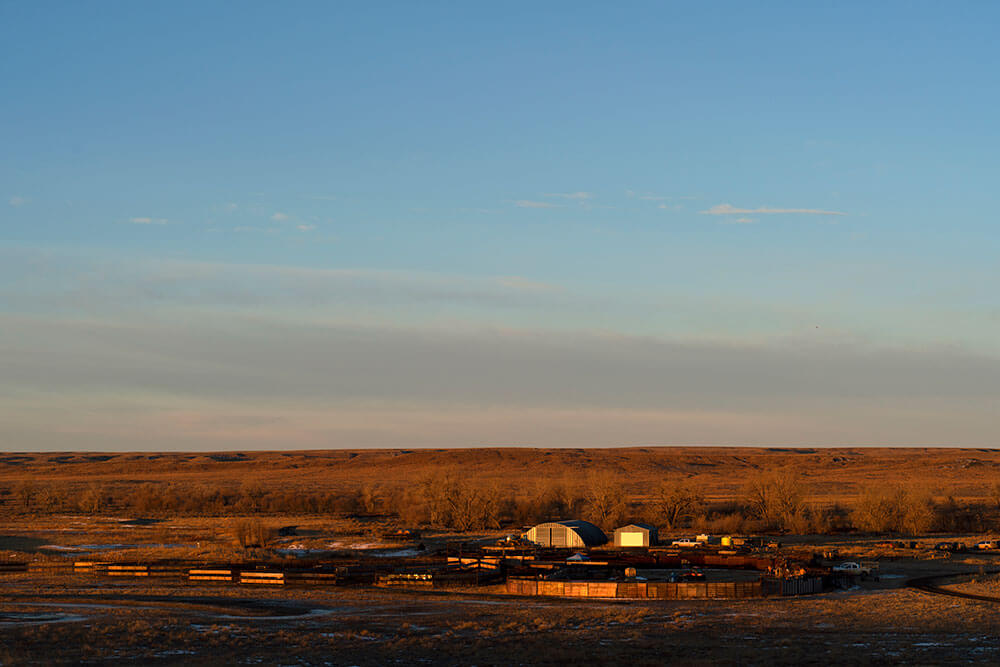
As part of the American Prairie Bison Restoration program, the reserve team periodically performs bison handlings on our deeded property. The latest bison handling in January involved more than 50 staff, volunteers, and scientists dedicated to bison conservation, and had several goals:
- Because bison are classified as livestock by the Bureau of Land Management and state of Montana, a bison handling enables blood testing, fecal testing, tagging, and other management tools needed to comply with state and federal regulations.
- Blood testing for DNA to monitor herd genetics and social dynamics for herd stability.
- Blood testing for trace minerals to monitor animal health.
- Nasal swab testing for the bacteria Mycoplasma bovis.
- Separate animals that will be sent to other conservation herds and tribal partners, in accordance with stocking rates that are determined to maintain ecological health of the land.
The Capture
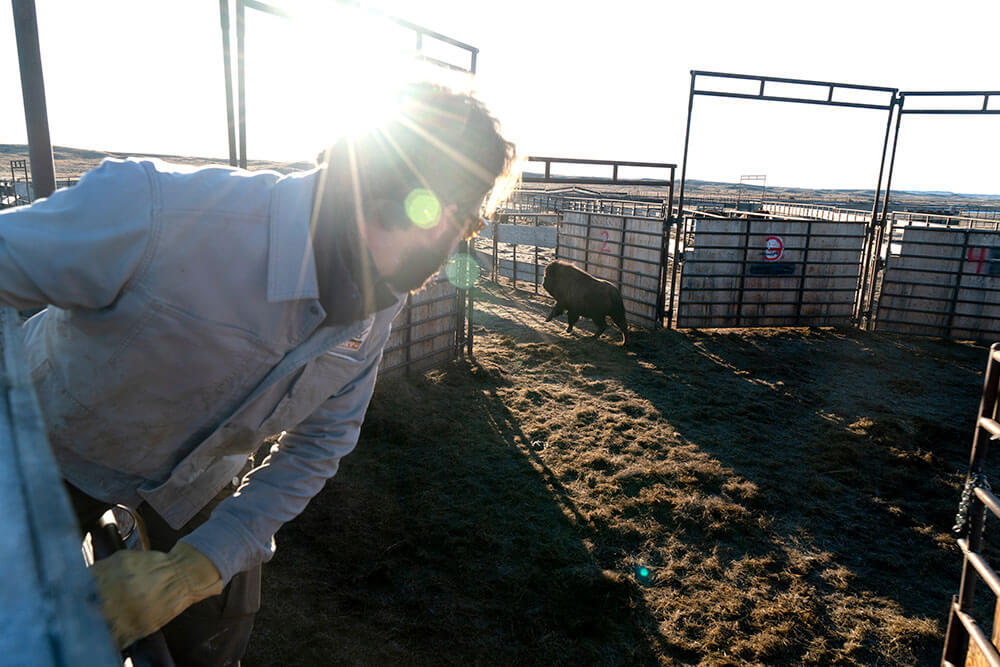
Capturing bison is no easy feat, especially when the herd is managed primarily using unobtrusive strategies that allow the development of natural instincts and tendencies. But Senior Bison Restoration Manager Scott Heidebrink and his team are up to the task, and it’s not something they take lightly.
“We don’t move bison unless we have to,” Heidebrink explains. “We manage bison as wildlife to the extent possible, and when we have to handle them we take every precaution we can to make it as safe and non-stressful as possible. Everything we do during a bison handling is for bison conservation.”
The work begins by building a temporary facility consisting of an intricate network of pens, alleys, and gates leading to a hydraulic squeeze chute that can safely hold a bison in place for testing and research purposes. A series of catwalks and a central (bison-free) area allows the team of staff and volunteers to efficiently, safely, and quietly communicate with each other as bison are moved through the facility.
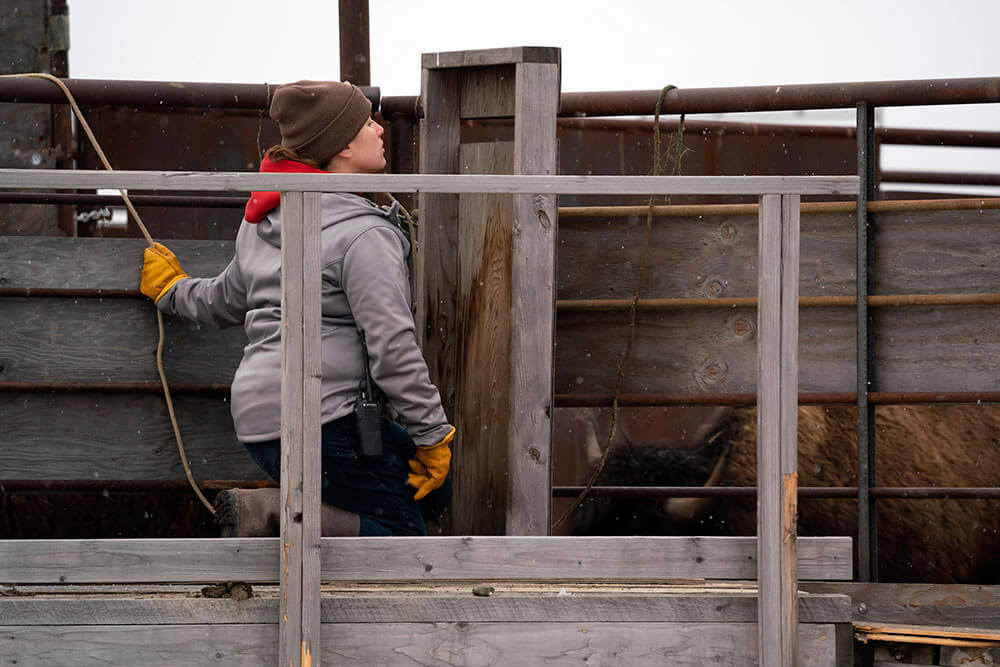
Once the capture facility is built, the reserve team begins to lure bison into the open pens with fresh hay. In winters with deep snow, fresh hay is hard for bison to resist. When snow is scarce, the bison are harder to lure from their pasture and the team begins to round them up using vehicles to gather them as efficiently as possible.
Once a sufficient number of bison are captured (typically 200-300), the handling team assembles and prepares for the weeklong handling operation.
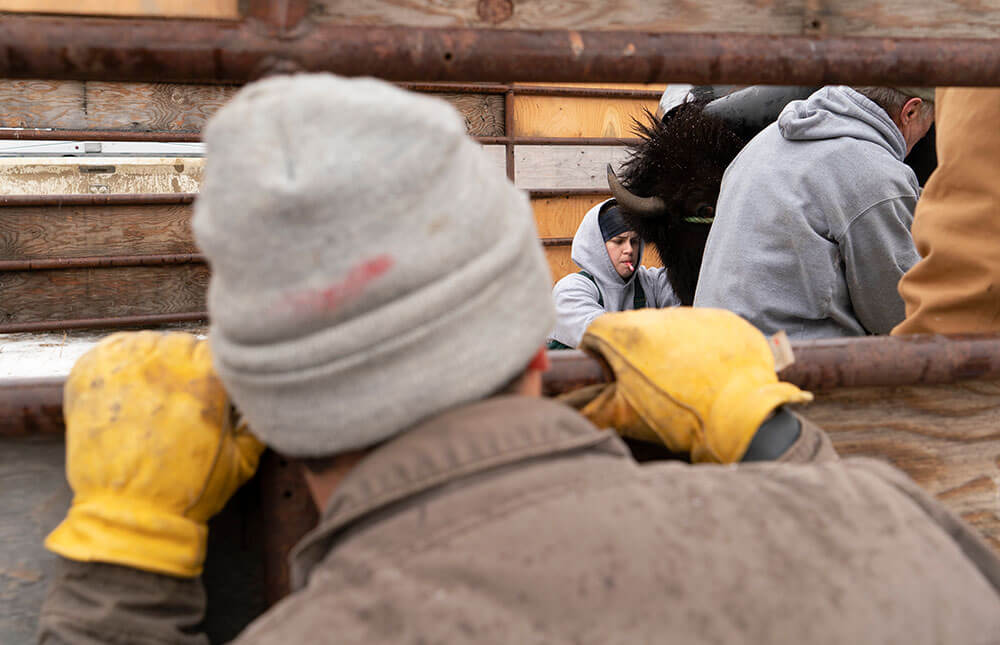
Bison Handling

A day of handling begins before dawn with coffee, breakfast, and a safety meeting. Once the team is informed and aligned, they walk quietly to the facility in single file to help keep the bison calm. When everyone is in position, Reserve Project Manager Lars Anderson slowly walks into a holding pen, carefully reads the animals’ body language and movement, and then works to split a small group of bison away from the main group and into the transfer pen before closing the gate behind him.
“We really try to read each animal’s body language and movements,” says Heidebrink. “By doing that, you can tell which bison are ready to break away from the pack and you can use that natural instinct to guide them safely into the chute.”
From the transfer pen, the bison are moved into a series of gated chutes where they are moved through by a staff member on an elevated catwalk. To alleviate stress on the animals, they are guided using a small flag on a four-foot stick and quiet body motions.

As the bison travel further down the chutes, they move into a narrow alley of single chutes with six gated sections, each big enough for only one bison at a time. One by one, the animals are slowly moved into and through the sections. When the animal and team is ready, the front gate of a section is opened so the bison can move forward. As an animal moves ahead, a gate is slowly closed behind it. At the last section, a final gate is opened and the animal moves forward into the squeeze chute where a series of hydraulic presses quickly and safely “hug” the bison.
Once in the squeeze chute, an animal is held in place just long enough to administer the testing, collaring, and tagging. When the work is complete, the squeeze chute team communicates to those managing the holding pens to let them know if the bison will be released back onto pasture or into a particular pen for “surplus,” or transfer off of American Prairie land to another conservation herd.
This process is repeated as many times as conditions and the bison will allow. If the bison are too stressed or if temperatures are too warm, the entire operation is halted for the safety of the bison and staff. Typically, the team is able to move about 50 bison per day.
Advancing Conservation Across the Country
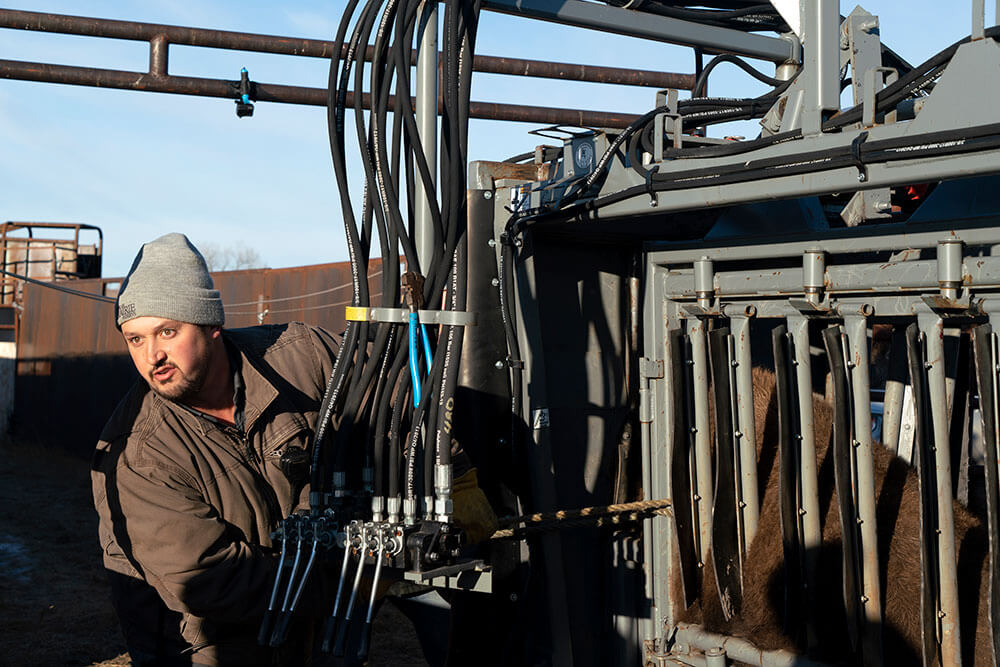
“The bison handling operations are not exactly what people picture when they think about conservation, but they’re essential to what we’re doing to meet and exceed government compliance, which in turn increases social tolerance for bison to help expand habitat and herd numbers,” says Senior Bison Restoration Manager Scott Heidebrink.
At the January 2020 handling, the team handled 216 bison over five days. Here’s the breakdown by the numbers:
- 89 GPS ear tags on a LoRa network deployed.
- 2 GPS collars removed.
- 5 GPS collars deployed.
- 5 National Geographic CRITTERCAMS deployed.
- 50 bison disease tested through blood and fecal sampling.
- 25 bison tested for trace minerals through blood sampling.
- 69 bison had blood drawn for DNA testing.
- 10 bison had nasal swabs taken to test for Mycoplasma bovis.
- 2 Calves will be transferred to the Smithsonian National Zoo in Washington, D.C.
- 51 bulls, cows and calves transferred to the Blackfeet Nation.
- 25 calves transferred to the Quapaw Nation in Oklahoma.
- 9 bulls transferred to the Fort Belknap Tribes.
Each bison handling represents an incremental step toward the restoration of this iconic and ecologically vital species both on the prairie and across the country.
“In terms of having diverse and pure genetics, we have the gold standard of bison,” Heidebrink says. “That’s a big reason why other conservation herds request our animals when it comes time for us to move bison.”
American Prairie bison are helping to preserve the genetic purity of the species, while growing conservation herds around the country, and supporting the cultural, traditional, spiritual and environmental values of Native American Tribes.
